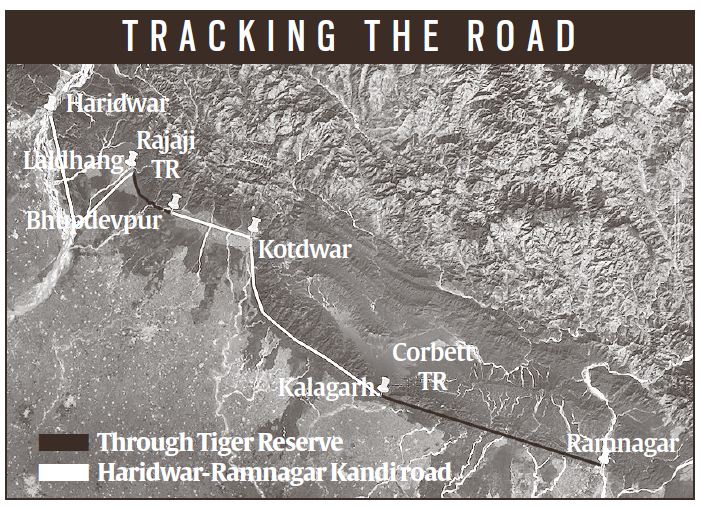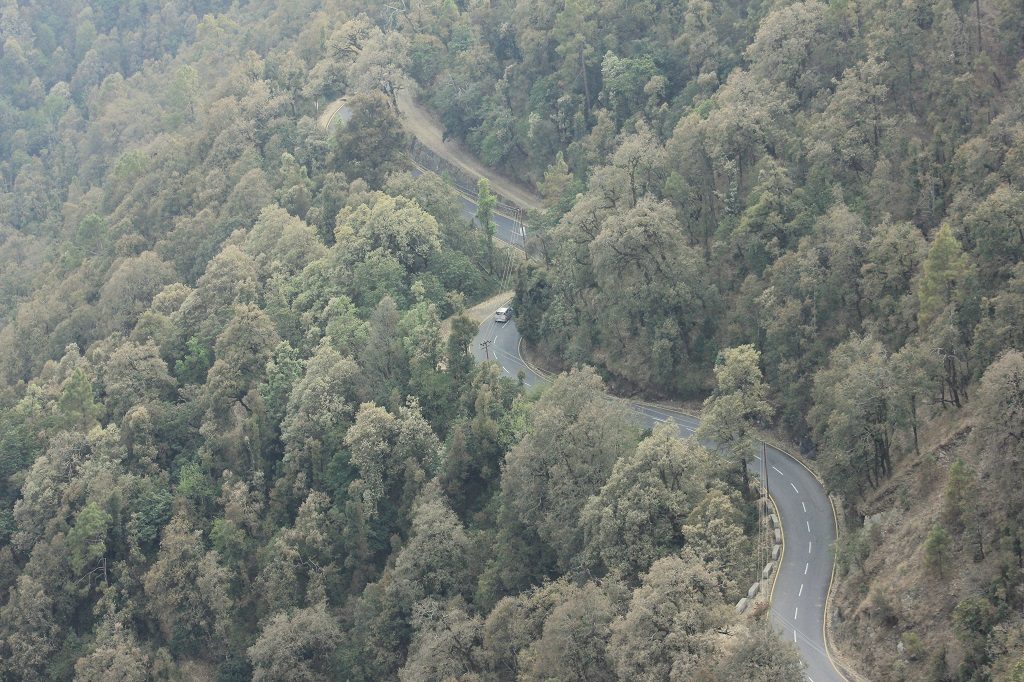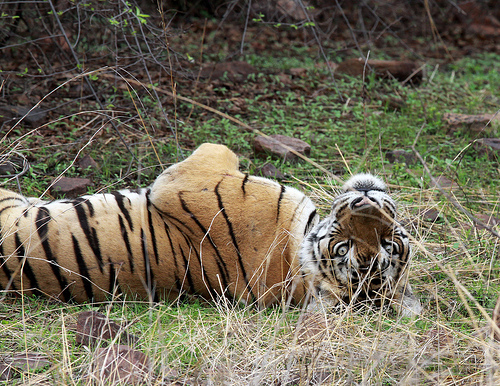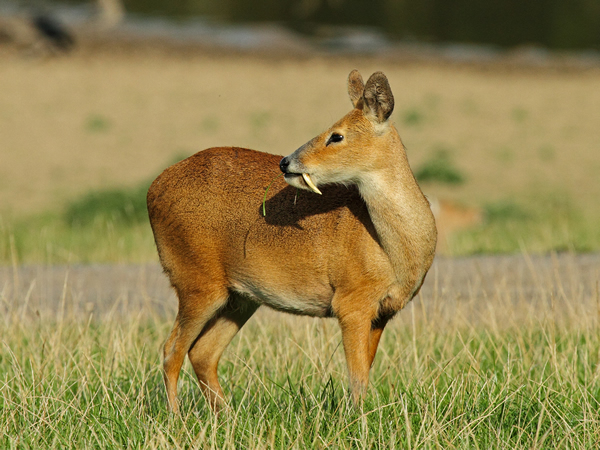The Supreme Court of India last Friday stayed the construction work of an 11.5 km stretch road that is supposed to be build between Laldhang-Chillarkhal in the Rajaji Tiger Reserve in Uttarakhand. For the promised road, Uttarakhand government had conveniently bypassed statutory clearances and begun the work.
The court has issued a notice to Chief Secretary of the State, Principal Chief Conservator of Forest, Chief Wildlife Warden, Field Director of the Reserve and Principal Secretary of Public Works Department taking them to task for flouting norms.
Also Read: Uttar Pradesh to Axe 50,000 Trees in Tiger Habitat to Build a Road
On June 19th the Central Empowered Committee (CEC) had sent a report to the court revealing how the road between Laldhang and Chillarkhal was being constructed by using protected area land, which cannot be done unless approved by National Board for Wildlife (NBWL).
The court said, “It is apparent that the advice of the National Tiger Conservation Authority (NTCA) has not been taken and permission from the standing committee of the National Board for Wildlife has also not been taken. There appears to be numerous violations of the Forest Conservation Act. Therefore further construction of the road should be stopped forthwith.”

Important Wildlife Corridor
The area under the radar is an important wildlife corridor connecting Corbett National Park with the Rajaji Tiger Reserve. It also connects the Shivalik Elephant Reserve and is an important forested area for many endangered species including the Tiger, Elephant, and the Asiatic black bear.
Also Read: Road Kills Pose High Risk to Leopards in Madhya Pradesh
The area where the road was being constructed falls in the buffer zone of the reserve and supports around 4 tigers per 100 square kilometre say experts.
Wildlife conservationists Rohit Choudhary was the first to inform CEC about the ongoing construction and asked them to take immediate action as without that the project would cause irreparable damage to the forest.
Trampling Over Wilderness
Looking back, it seems with the poll season and the eagerness to fulfil old promises given to the public during last elections, the state government sped up the work on the planned highway that would cut down travel time in Uttarakhand and skip entering Uttar Pradesh.
Jay Mazoomdar wrote for The Indian Express “On December 16, 2018, Uttarakhand Forest Minister Harak Singh Rawat unveiled the foundation stone for the 11-km Laldhang-Chillarkhal segment, claiming his government achieved what no other government could in many decades. What Rawat failed to mention was that the state PWD under Chief Minister Trivendra Singh Rawat in its application filed in July 2018 did not state that the land belonged to Rajaji Tiger Reserve. Rawat’s forest department, records show, identified the land as part of the tiger reserve buffer but did not refer the matter for mandatory wildlife clearance.
Asked how tiger reserve land was transferred without obtaining a wildlife clearance, Uttarakhand Principal Chief Conservator of Forests Jai Raj referred to Divisional Forest Officer (Lansdowne) Vaibhav Kumar Singh. Singh annexed a 2014 order of the MoEF to claim that “wildlife clearance is exempted for this road as the project was regarding strengthening of a pre-existing road”.
The 2014 MoEF order, however, exempts resurfacing and strengthening of only existing highways, and not unpaved forest roads, within Protected Areas from wildlife clearance.”
The Principal Conservator of Forest later justified that the road would be helpful for patrolling and protection of animals during rains.
Now, the court found that the NTCA had indeed warned that the road was inside a tiger reserve and the Uttarakhand Government or the PWD did not take approval for the construction.
Also Read: Road Block for Tigers
What is noteworthy is that in the recent days The Ministry of Road Transport and Highways in a communication to all the State Governments, has directed authorities to ‘avoid any road alignment through national parks and sanctuaries.’
Further, the Ministry has asked States as well as National Highway Authority of India (NHAI) to avoid building highways through wildlife sanctuaries and national parks, unless absolutely unavoidable. “To have minimum impact of highways on the protected eco-sensitive area, the implementing agency should consider sparing sanctuaries/national parks at the planning stage and wherever possible taking a bypass/detour,” the Ministry said.
For once, timely action has helped save an important part of the forest. Hopefully, the court’s verdict would be respected, and the corridor would remain safe from over enthusiastic planners willing to bulldoze over wildlife without contemplating the consequences.
If you liked what you read and wish that we continue to bring stories of lesser known species into the mainstream, do support our work by clicking here.
Featured Image via Travel Tales from India










2 thoughts on “Supreme Court Stops Road Construction Through Rajaji Tiger Reserve”